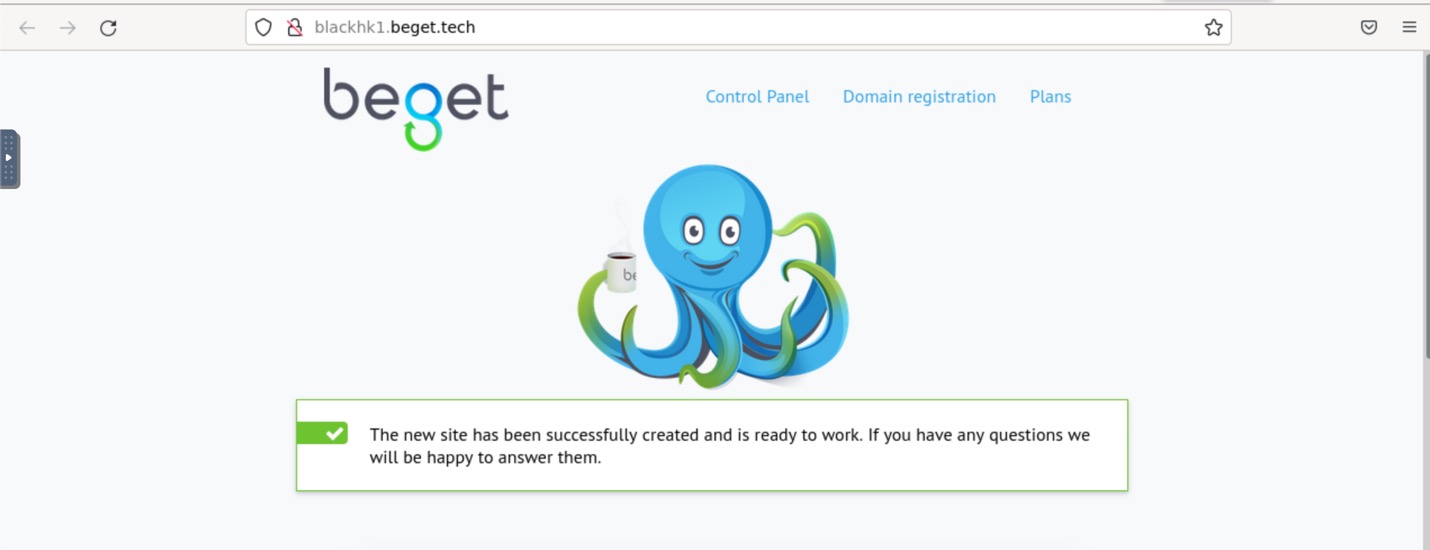MaaS(Malware as a Service)の台頭により、インフォスティーラーの発見と配備がかつてないほど容易になっています [1]。このような状況下、企業はサイバーハイジーンを優先し、自社の環境におけるコンプライアンスの問題に対処することが極めて重要です。MaaSのおかげで、ほとんど経験のない攻撃者が、低リスクの攻撃と思われるものを、重大な侵害に拡大することができます。このブログでは、より良いサイバーハイジーンとコンプライアンス問題に対する意識の向上で軽減できたかもしれない侵害について深堀します。

2022年5月、Darktrace DETECT/Networkは、ラテンアメリカの通信会社でtorrentアクティビティに関する複数のコンプライアンスアラートにリンクしているデバイスを特定しました。このデバイスは、アーカイブされたウェブページから疑わしい実行ファイルをダウンロードすることになりました。当初、ダウンロードされたファイルを分析したところ、このファイルは、クライアントの業種に関連する古いソフトウェア(GeoDesy GD-300用のSNMPc管理ツール)であるものの、正規のものである可能性があることがわかりました。しかし、これはさらなる不審な行動の前の最初の出来事であったため、ダウンロードされたソフトウェアがマルウェアと一緒にパッケージされており、最初の侵害を示すものである可能性もあったのです。4月上旬以降、このデバイスは、BitTorrentとuTorrent(BitTorrentクライアント)の双方に対して定期的にコンプライアンスアラートを破っていました。これらの接続は、共通のトレントポートである6881を介して発生しており、これが感染経路であった可能性があります。

実行ファイルがダウンロードされた直後、Darktrace DETECTによって新たな送信SSH接続がAdvanced Searchに 'SSH::Heuristic_Login_Success' という通知とともに警告されました。これは、違反デバイスがこのプロトコルで接続を行うことは一般的ではなく、宛先が見たことのないブルガリアのIPアドレス(79.142.70[.]239)であることから、強調されて表示されました。この接続は4分間続き、デバイスは31.36MBのデータをダウンロードしました。
この後、違反デバイスは、疑わしいユーザーエージェントを使用して、ロシアとデンマークの稀なエンドポイントに異常なHTTP接続を行っていることが確認されました。ロシアのエンドポイントは、最近登録された1つのドメインをリストアップしたテキストファイル('incricinfo[.]com')をホストしていることが指摘されました。デンマークのエンドポイントへの接続は、OSINTがBeamWinHTTPローダー[2]の使用に関連付けたURIを持つIPに対して行われました。このローダーは、他のマルウェア、特に情報窃取プログラム[3]をダウンロードし実行するために使用されることがあります。


異常なユーザーエージェントとの接続と同時に、端末がエンドポイントから「Yuuichirou-hanma[.]s3[.]pl-waw[.]scw[.]cloud」という実行可能ファイルをダウンロードする様子も確認されました。このファイルを分析したところ、さらなるマルウェアや潜在的に望ましくないプログラム(PUP)を展開するために使用される可能性があることが判明しました。BeamWinHTTPはまた、より邪悪なプログラムをロードし、妥協を広めるのに役立つこれらのPUPsのインストールを引き起こします。
この挙動は、デバイスがエンドポイントである「hakhaulogistics[.]com」から5種類の実行ファイルをダウンロードした際に確認されました。このドメインは、Darktrace が環境内で新しいものとしてマークしたベトナムの物流会社にリンクされています。このドメインが侵害され、悪意のあるインフラストラクチャをホストするために使用されていた可能性があります。侵害の時点で、ダウンロードされたファイルのいくつかは、一般的なOSINT [4] によって悪意のあるものとしてラベル付けされていました。さらに、少なくとも1つのファイルは、RedLine Information Stealerに明示的にリンクされていました。
その直後、このデバイスは既知のTorリレーノードに接続しました。Torは、攻撃者の活動を匿名化し、難読化する方法を提供するため、C2通信の手段として一般的に使用されています。この時点で、この活動に関する最初のProactive Threat Notification(PTN)が発生しました。これにより、Darktrace SOCから直ちにフォローアップ調査が行われ、イベントのタイムラインと影響を受けるデバイスが、お客様のセキュリティチームに直接発行されました。

この時点までに、Darktrace は、明らかな機能やサービスを持たないように見えるさまざまなエンドポイントへの大量の異常な送信 HTTP POST を確認していました。これらのPOSTリクエストに続いて、侵害されたデバイスは、ドメイン生成アルゴリズム(DGA)によって生成されたと思われるドメイン www[.]qfhwji6fnpiad3gs[.]com への長いSSL接続を開始していることが確認されました。最後に、SSL接続の少し後に、デバイスがロシアのドメイン test-hf[.]su から別の実行可能ファイルをダウンロードするのが確認されました。このファイルに関する調査から、このファイルはRedLine Stealer [5] に関連することが示唆されました。

コンプライアンス違反の危険性
RedLineによる侵害は顧客の懸念事項でしたが、セキュリティ上のギャップは可視性ではなく、むしろベストプラクティスでした。これらの事象が発生する前、デバイスは一般的にtorrentingに関連する接続を送受信していることが確認されていることに注目することが重要です。過去には、RedLine Stealerが「クラックされた」ソフトウェア(コピープロテクトが解除されたソフトウェア)を装っていることが確認されています [6]。今回の例では、偽の「SNMPc」実行ファイルを最初にダウンロードしたことが、この動作の証拠となった可能性があります。
これは、悪意のあるファイルを転送するピアツーピアベクターとして、torrentも非常に人気があることを思い出させるものです。ネットワークのスロットリングや未承認のVPNを使用する可能性もあり、トレントは通常、企業環境においてコンプライアンス違反とみなされます。今回の事件が、ユーザーが無意識に悪意のあるソフトウェアをダウンロードしたことが原因であれ、BitTorrent の使用により悪意のある行為者にさらされたことが原因であれ、いずれのケースも、ユーザーが既存のコンプライアンス管理を回避しているか、一般にコンプライアンス管理が欠如していることを示しています。企業にとって重要なのは、ユーザーが、企業が悪意のある行為者にさらされるのを抑えるような行動をとっているかどうかを確認することです。今後、このような脅威を阻止するためには、企業は日頃から適切なサイバーハイジーンを奨励し、トレントのような特定の行為をブロックするアクセス制御を導入する必要があります。
ユーザーが何をしているかにかかわらず、Darktrace は、コンプライアンス違反やコンプライアンス欠如に起因する活動を検知し、対策を講じることができるように位置づけられています。このブログのインシデントで使用されたさまざまなC2ドメインは、ほとんどのセキュリティツールが警告を発したり、人間のチームがトリアージしたりするには、あまりにも素早いものでした。しかし、これはCyber AI Analyst にとっては問題なく、キルチェーン全体で攻撃の側面を引き寄せ、顧客のセキュリティチームとDarktrace SOCアナリストの両方の時間を大幅に節約することができました。もし Darktrace RESPONDがアクティブに設定されていれば、最初のBitTorrent接続や着信ダウンロードなどの活動をブロックすることができましたが、適切な予防措置があれば、ブロックする必要はありません。 Darktrace PREVENTは、このような脆弱性が悪用される前に、攻撃者の先手を打って防御を強化し、あらゆる脆弱性を排除するために継続的に活動しています。これには、攻撃対象領域の管理、攻撃経路のモデリング、セキュリティ意識の向上に関するトレーニングなどが含まれます。この場合、Darktrace PREVENTは、Torrentingアクティビティを潜在的に有害な攻撃経路の一部として強調し、それを軽減するための最適なアクションを推奨することができたはずです。
「未経験者でも大丈夫」
これまで、組織を攻撃するために必要なツールを作成し、使用できるのは、高度な技術を持つ攻撃者のみでした。しかし、Ransomware-as-a-Service(RaaS)が高い利益を生むことが証明されたため、マルウェアもまた儲かるビジネスとなりつつあるのは当然と言えるでしょう。SaaSが、開発経験のない正規の企業がアプリを使用・維持するのに役立つように、MaaSは、ハッキングの経験がほとんどない攻撃者が組織を侵害し、目的を達成するのに役立ちます。RedLine Stealerは、簡単に入手でき、かつ高価ではないので、より頻繁に、より多くの被害者に対して攻撃を行うことができます。このブログで取り上げた事件はその証拠であり、セキュリティは強固な可視性だけでなく、コンプライアンスとベストプラクティスからも得られるということを強く示しています。PREVENT のような強力な防御ツールがあれば、セキュリティチームは時間を節約しながら、こうしたセキュリティの側面を先取りしていることに自信を持つことができます。
Adam Stevens氏のこのブログへの寄稿に感謝します。
付録
Darktrace モデルブリーチ
· Anomalous Connection / Multiple HTTP POSTs to Rare Hostname
· Anomalous Connection / New User Agent to IP Without Hostname
· Anomalous File / EXE from Rare External Location
· Anomalous File / Multiple EXE from Rare External
· Anomalous File / Numeric Exe Download
· Anomalous Server Activity / New User Agent from Internet Facing System
· Compliance / SSH to Rare External Destination
· Compromise / Anomalous File then Tor
· Compromise / Possible Tor Usage
· Device / Initial Breach Chain Compromise
· Device / Long Agent Connection to New Endpoint




参考文献
[1] https://blog.sonicwall.com/en-us/2021/12/the-rise-and-growth-of-malware-as-a-service/
[2] https://asec.ahnlab.com/en/33679/
[3] https://asec.ahnlab.com/en/20930/
[4] https://www.virustotal.com/gui/file/acfc06b4bcda03ecf4f9dc9b27c510b58ae3a6a9baf1ee821fc624467944467b & https://www.virustotal.com/gui/file/dad6311f96df65f40d9599c84907bae98306f902b1489b03768294b7678a5e79
[5] https://www.virustotal.com/gui/file/ff7574f9f1d15594e409bee206f5db6c76db7c90dda2ae4f241b77cd0c7b6bf6









































